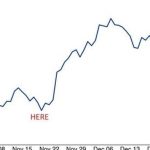It’s a quiet session, with S&P 500 and Nasdaq 100 futures flat as US markets are closed for Thanksgiving. The largest US stock index has recovered almost all recent losses, and is back to just 1% below all time highs after four days of gains, as sentiment was boosted bets that the Fed will cut interest rates faster than previously thought (Dec rate cut odds have gone from 85% to 30% back to 85%). European and Asian benchmarks posted modest moves. The MSCI All Country World Index was little changed after trimming its drop for November to 0.4% in the prior sessions. The gauge had been down nearly 4% for the month just over a week ago. Gilts lead a selloff in European government bonds, paring gains seen in the aftermath of the autumn budget on Wednesday. UK 10-year yields rise 4 bps to 4.46%. UK stocks also lag peers, with the FTSE 100 down 0.2% as miners weigh. And the pound falls 0.1%, joining the Swiss franc at the bottom of the G-10 FX pile. The kiwi outperforms, rising 0.2% after more hawkish signals from the RBNZ governor. WTI crude futures are steady near $58.70 a barrel ahead of an OPEC+ gathering this weekend. In another sign that risk appetite is returning, Bitcoin traded above $91,000 for the first time in a week. Gold fluctuated and the dollar paused a two-day retreat. There is nothing on the US calendar.
Here are some of the more notable corporate news:
- China Vanke Co. was rejected by at least two big local banks as it tried to secure a short-term loan to quell the default fears that have fueled a plunge in its bonds this week, according to people familiar with the matter.
- Chinese sports apparel company Anta Sports Products Ltd. is among firms exploring a potential takeover of Puma SE, according to people familiar with the matter.
- JPMorgan Chase plans to build a new three-million square feet tower in London that would serve as its principal UK headquarters and could contribute about $13 billion to the local economy over six years, it said in a statement.
- A gauge of risk on Oracle Corp.’s debt reached a three-year high in November, and things are only going to get worse in 2026 unless the database giant is able to assuage investor anxiety about a massive AI spending spree, according to Morgan Stanley.
- SoftBank Group Corp.’s credit-default swaps climbed to the highest level since April, as investors turned cautious on the tech behemoth’s debt-fueled growth at a time of intensifying global competition.
Among the more notable movers on Thursday, Japanese and South Korean equities outperformed their regional peers, with tech shares leading gains in both markets. In Europe, Germany’s DAX index rose 0.3% as Puma SE jumped 13% on takeover interest from multiple bidders.
The moves in stocks signal fresh optimism after worries over stretched tech valuations hammered equities earlier in the month. They also track expectations for Fed easing, with money markets pricing in roughly an 80% chance of a quarter-point cut next month and leaning toward three more by the end of 2026. A little more than a week ago, traders were projecting three cuts in total.
According to Mohamed El-Erian, the swing is a “remarkable move, made even more stark by the one-month view: the probability was over 90% at the end of October before collapsing and rebounding. Play-by-play Fedspeak has been a primary driver of this massive volatility.
So much for “forward policy guidance” fostering stability and predictability.“
This four-day chart—yes, only four days—illustrates just how violently the market has repriced expectations for a Federal Reserve rate cut on December 10. The implied probability surged from the low 30s to over 90% just an hour ago, and currently sits at 87%.
It is a remarkable… pic.twitter.com/lVLQkTZm2Z— Mohamed A. El-Erian (@elerianm) November 25, 2025
“We’re building up for a classic year-end rally,” said Daniel Murray, chief executive officer of EFG Asset Management Switzerland. “Our main scenario is one where actually the macro environment continues to hold up well into 2026, the corporate earnings outlook looks pretty decent and you get the added tailwind of the lagged effect of rate cuts.”
UK gilts gave back some of Wednesday’s rally that followed the Autumn budget. Chancellor of the Exchequer Rachel Reeves carved out a larger fiscal buffer, which buoyed sentiment, even though the tax-raising steps required cast a shadow over the outlook for economic growth. The pound and FTSE 100 were little changed.
“All told, we think the UK government did what it needed to do to keep UK bond markets on side,” wrote Bill Diviney, head of macro research at ABN AMRO. “While there is naturally some risk to this more backloaded fiscal consolidation round, it comes on top of an already considerable effort.”
Oil prices edged higher as investors assessed the next steps in US-led diplomatic efforts to end the war in Ukraine. Platinum touched its highest level in more than a month, supported by optimism over fresh demand after a Chinese exchange launched a new futures contract.
Top Overnight News
- US President Trump said regarding the shooting of National Guard members near the White House that the assault was an act of terror and the Department of Homeland Security is confident the suspect entered into the US from Afghanistan in 2021, while he directed the mobilisation of an additional 500 troops for Washington DC and said the US must re-examine every single alien who entered US from Afghanistan under Biden.
- The D.C. National Guard shooting suspect worked with CIA-backed military units during the U.S. war in Afghanistan, the agency said: WSJ
- FBI probes gunman’s motive in ambush shooting of Guardsmen near White House: RTRS
- Afghans say last path to safety shuts as US halts visas after DC shooting: RTRS
- Hong Kong fire: Death toll rises to 65 as blaze burns on after 24 hours: RTRS
- Trump, After Call With China’s Xi, Told Tokyo to Lower the Volume on Taiwan: WSJ
- Morgan Stanley Fined by Dutch for Dividend Tax Evasion: BBG
- France’s Macron unveils voluntary military service amid ‘accelerating threats’: RTRS
- BOJ Dove Avoids Giving Clear Hint on Timing of Rate-Hike Move: BBG
- General sworn in as Guinea-Bissau leader in swift coup after disputed vote: RTRS
- JPMorgan to Build New London Headquarters in Canary Wharf: BBG
- Ex-TSMC Executive’s Homes Searched After Intel Dispute Deepens: BBG
- Centrist Democrat Has Just Weeks to Save ACA Subsidies: WSJ
Tariffs/Trade
- USTR extended exclusions from China section 301 tariffs related to the forced technology transfer investigation until 10th November 2026.
- US Pentagon reportedly said that Alibaba (BABA/9988 HK) should be on the list for China military ties.
- Canadian PM Carney said talks with the US on trade have not restarted yet, while he had a short conversation with US President Trump on Tuesday and plans to go to Washington next week for the World Cup draw.
Fixed Income
- 10yr UST futures were little changed with US markets closed for Thanksgiving Day and after the latest 7yr offering stateside was an overall soft auction, but was an improvement from the prior month.
- Bund futures sat above the 129.00 level but with gains capped after recent whipsawing and ahead of German GfK data.
- 10yr JGB futures edged higher but with the gains modest after reports that Japan is likely to increase issuances of 2yr and 5yr JGBs, as well as the sale of treasury bills under its revised plan, while there were plenty of comments from BoJ’s Noguchi who advocated a gradual approach to hiking rates.
Commodities
- Crude futures faded some of the gains from the prior session, where price action was choppy amid Russia/Ukraine peace efforts and mixed data, while the latest EIA inventory report showed a larger-than-expected build in headline crude stocks.
- Baker Hughes Rig Count: Oil -12 at 407, Natgas +3 at 130, Total -10 at 544.
- Spot gold marginally declined after yesterday’s indecision, but with downside cushioned after recent dollar weakness.
- Copper futures took a breather after recently climbing in tandem with broader risk sentiment.
- LME executive said COMEX premium over LME is likely to persist over the next 18 months, while they are focused on listing new Chinese Indonesian brands in aluminium.
- ICSG Secretary General Paul White said world copper mine production is forecast to rise by 2.3% and world refined copper output is expected to rise by 0.9% in 2026, while world apparent refined copper usage is forecast to grow by 2.1% in 2026 and the global copper market will swing to a deficit of roughly 150,000 tons in 2026.
FX
- DXY remained lacklustre after having softened heading into the Thanksgiving Day holiday and with mixed data releases from the US, where Jobless Claims fell, and Durable Goods also printed better than expected, but Chicago PMI disappointed. Meanwhile, the Fed Beige Book noted economic activity was little changed since the previous report, according to most of the twelve Federal Reserve Districts, although two Districts noted a modest decline and one reported modest growth.
- EUR/USD edged higher and breached through resistance at the 1.1600 level, as recent ECB commentary continued to suggest an unwillingness to cut rates, while the attention turns to the latest ECB minutes scheduled later.
- GBP/USD marginally extended on gains after climbing back above the 1.3200 level in the aftermath of the UK Autumn Budget.
- USD/JPY was choppy and traded both sides of the 156.00 level, while there were comments from BoJ’s Noguchi, who reiterated that they will gradually adjust the degree of monetary accommodation if economic activity and prices develop in line with the bank’s outlook and stated they must take a measured, step-by-step approach in adjusting policy.
- Antipodeans extended on recent advances with NZD sustaining the post-RBNZ momentum and with upside facilitated by the constructive risk tone and encouraging data releases including stronger New Zealand Retail Sales and Business Confidence, as well as better-than-expected Australian Private Capex.
DB’s Jim Reid concludes the overnight wrap
If you’re reading this in the US, then Happy Thanksgiving. And if you haven’t taken the Turkey out of the freezer yet… Run! US equity investors have had a fair bit to be thankful for this week with the S&P 500 (+0.69%) posting a fourth consecutive advance to close just over 1% from its record high. The S&P 500 has now recorded its biggest 4-day bounce (+4.19%) since the US-China trade truce back in May. That came as anticipation mounted about another Fed rate cut in two weeks’ time, with a further boost from solid US data. Then in Europe, there was even more relief after the UK government’s budget was received smoothly by markets, after an initial chaotic wobble due to it being leaked beforehand. 10yr gilt yields (-7.0bps) outperformed their counterparts elsewhere. So that took out another key event risk on the fiscal side, with the STOXX 600 (+1.09%) recording a strong advance of its own.
In terms of that UK budget, the market reaction was generally quite positive, as Chancellor Reeves announced an increase in the fiscal headroom that was bigger than expected. So on the current OBR forecasts, the government now has £22bn of space against its fiscal rule that the current budget should be in balance by 2029-30. Bear in mind that’s more than double the £10bn of headroom in March, and above consensus expectations for around £15bn of headroom in this budget. And in turn, that reassured investors that a further round of fiscal tightening would be less likely, as the government now had a bigger margin for error against any kind of negative shock. Similarly on the gilt remit, the Debt Management Office announced they would sell £303.7bn of gilts in this fiscal year, beneath expectations for £308.1bn. So again that was on the upside of market expectations, and helped to support gilts across the curve.
In terms of the policy measures themselves, the main headline was £26bn worth of tax rises by 2029-30, which were concentrated towards the latter part of the forecast. In economic terms, the biggest included an extension to the freeze on income tax thresholds for three years from 2028-29. In addition, they’re going to charge National Insurance (a payroll tax) on salary-sacrificed pension contributions, and there’s a 2-point tax increase on income from dividends, property and savings. As well as a mansion tax on properties above £2 million. Then there were a few spending increases as well, including the removal of the two-child limit on universal credit payments (a benefit for those on low incomes or out of work).
The UK budget deficit is expected to drop from 4.5% of GDP to 3.5% next fiscal year and to just under 2% by the end of the decade, though there will inevitably be questions on whether the backloaded tightening fully materialises. Meanwhile, our UK economist Sanjay Raja sees the cost of living measures in the budget dampening inflation by around 0.4pp, largely as expected.
With all that in hand, UK assets put in a strong performance, with the 10yr gilt yield (-7.0bps) falling back to 4.42%, whilst the 30yr yield (-11.5bps) posted its biggest daily decline since April, down to 5.20%. Similarly, sterling strengthened against the other major currencies, moving up +0.57% against the US Dollar, and +0.35% against the Euro. And then for equities it was also a strong day, with both the FTSE 100 (+0.85%) and the more domestically-focused FTSE 250 (+1.24%) posting solid gains. The only main point of concern for markets was how backloaded a lot of the fiscal tightening was, which was concentrated further out in the forecast horizon, but overall it didn’t turn into the more negative risk event that many had feared.
Outside the UK, markets generally put in a decent performance, with equities advancing on both sides of the Atlantic. For instance, the S&P 500 (+0.69%) posted another gain that left it -1.1% beneath its record high, with a strong advance for the NASDAQ (+0.82%) as well. The gains were broad-based, with over 70% of the S&P 500 higher on the day, while the Mag-7 (+0.40%) underperformed. The VIX volatility index declined by -1.37pts to a 3-week low of 17.19. Meanwhile in Europe, the STOXX 600 (+1.09%) put in a third consecutive gain, with similar advances for the DAX (+1.11%) and the CAC 40 (+0.88%). Today should be a quieter one however, as US markets are closed for the Thanksgiving holiday.
Otherwise, front-end US Treasuries were one of the few points of weakness yesterday, with the 2yr yield moving up +1.7bps on the day to 3.48%. They had traded as much as 4bps higher on the day after US labour market data surprised on the upside, with the weekly initial jobless claims falling back to 216k in the week ending November 22 (vs. 225k expected). Indeed, that’s their lowest level since April, which helped to reassure investors that the labour market had held up through the shutdown. This week coincides with payroll survey week which augurs well. The sell-off at the front-end didn’t impact December Fed cut probabilities too much with it hovering around 80% for most of the day, roughly where it started. Last Thursday it hit a low of 24.5% intra-day. That turning point is probably the main reason risk assets have rebounded so strongly.
Further out the curve, 10yr Treasuries (-0.2bps to 3.99%) were little changed. That largely matched the sovereign bond moves in Europe, with yields on 10yr bunds (-0.1bps), OATs (-1.0bps) and BTPs (-0.9bps) all posting a modest decline.
On the geopolitical side, the newsflow around Ukraine talks slowed yesterday. Some of the most notable headlines came with the Kremlin confirming that a Steven Witkoff-led US delegation is planning to visit Moscow next week and Politico reporting that Secretary of State Rubio has pushed Ukrainian and European officials to accept a peace deal before the US agrees to any security guarantees for Ukraine. Oil prices moved higher, with Brent crude up +1.04% to $63.13/bbl.
Asian equities are continuing the global recovery. Across the region, the Nikkei 225 is leading the way climbing +1.28% and driven by tech. US diplomatic initiatives aimed at mitigating elevated tensions between Tokyo and Beijing also seem to have helped. The KOSPI is up +0.73%, albeit retracing some of its initial advances after the Bank of Korea’s decision to maintain its benchmark interest rate ( see below). The Shanghai Composite (+0.70%) and Hang Seng (+0.64%) are also doing well. The S&P/ASX 200 (+0.13%) is lagging its peers, amid persistent concerns that the Reserve Bank of Australia will not cut interest rates further. US equity futures are up around a tenth of a percent on what would be a quiet trading session given the holiday.
Turning to the BOK’s monetary policy decision, the central bank opted to keep its benchmark interest rate at 2.5%, marking the fourth consecutive hold. The central bank presented an optimistic economic outlook, revising its growth forecast for the current year up by 0.1 percentage point to 1% and upgrading its projection for the next year to 1.8% from 1.6%. While growth forecasts have seen a slight improvement, it notably remains below the central bank’s estimated potential growth rate of 2%.
To the day ahead now, and it’s a quieter one with US markets closed for Thanksgiving. Otherwise, data releases from the Euro Area include the M3 money supply for October, and the European Commission’s economic sentiment indicator for November. From central banks, we’ll get the ECB’s account of their October decision, and hear from ECB Vice President de Guindos, the ECB’s Villeroy, and the BoE’s Greene.
Loading recommendations…











